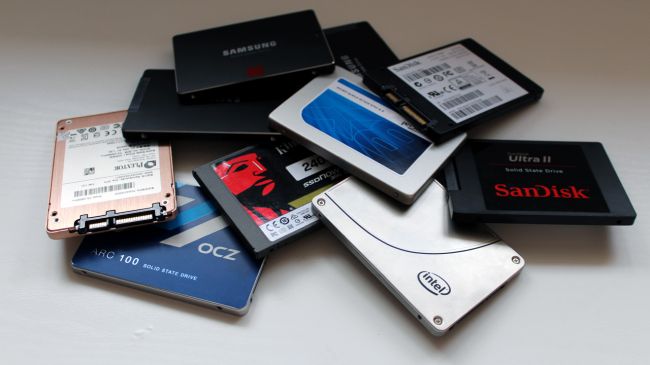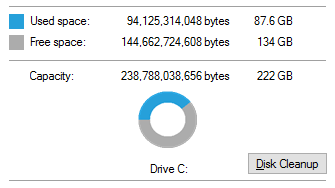What size SSD is right for me?
Depends on how you set things up.

There is general agreement that an SSD has several advantages over a mechanical hard drive, including much faster data transfer speeds, lower power consumption, lighter weight and high reliability. Once you get used to an SSD in your system, there really is no going back, and using a system with an old fashioned hard drive for its boot drive puts you back into the 1990’s.
Around here, anything that can get upgraded to an SSD from an old fashioned hard drive does. While NVMe drives are on the faster cutting edge of storage, most existing systems—especially notebooks—need the more traditional 2.5” SSD format.
When shopping for an SSD (or any storage device for that matter), an important consideration is the storage capacity. Too small of capacity, and there won’t be enough room for the operating system and programs. On the other hand, with too large of a drive, it's just wasted space that will not get used.
It should also be considered if the SSD will be the only drive in the system. In most desktops, the SSD should be installed as the boot drive, and there will be enough room for an additional drive to hold larger collections of data. However, in a notebook, the vast majority have space inside for only a single drive, and any additional storage needs need to be connected externally.

With that background, let’s get back to the original question: how large of an SSD do you need? Windows 10 needs a minimum of 16 GB of storage to run, but this is an absolute minimum, and at such a low capacity, it will literally not have even enough room for updates to install (Windows tablet owners with 16 GB eMMC’s often get frustrated with this).
A few years ago, SSDs were so expensive that they offered meager capacities as small as 60 GB to keep the costs down. The drives do not even come in these limited capacities these days, and even 128 GB SSD’s are really leftovers—most not being newly made by the manufacturers currently.
The entry size for SSDs currently are 250 GB drives, which range in actual size from 240 GB to 275 GB depending on the manufacturer. With the retail price of about $85 to $110, it hardly makes sense to go any smaller, as to get half the size will only save about $30. Also, by having your OS, Windows, and room for your programs all on the SSD, all the apps will load faster, and the system will feel a lot more responsive.
When the SSD is going to be the only drive in the system, such as in a laptop or Intel NUC mini PC, then you should carefully assess your storage needs. If the SSD is a replacement for an existing storage device, then it is simple enough to look at how much data is on the existing drive, and to make sure the replacement drive will be able to accommodate it. While often impossible to predict future needs precisely, if between the two sizes, go with the larger one to allow for longer use of the drive. It is in these situations that a 512 GB, 1 TB or even larger SSD drive can make sense.
Keep up to date with the most important stories and the best deals, as picked by the PC Gamer team.

